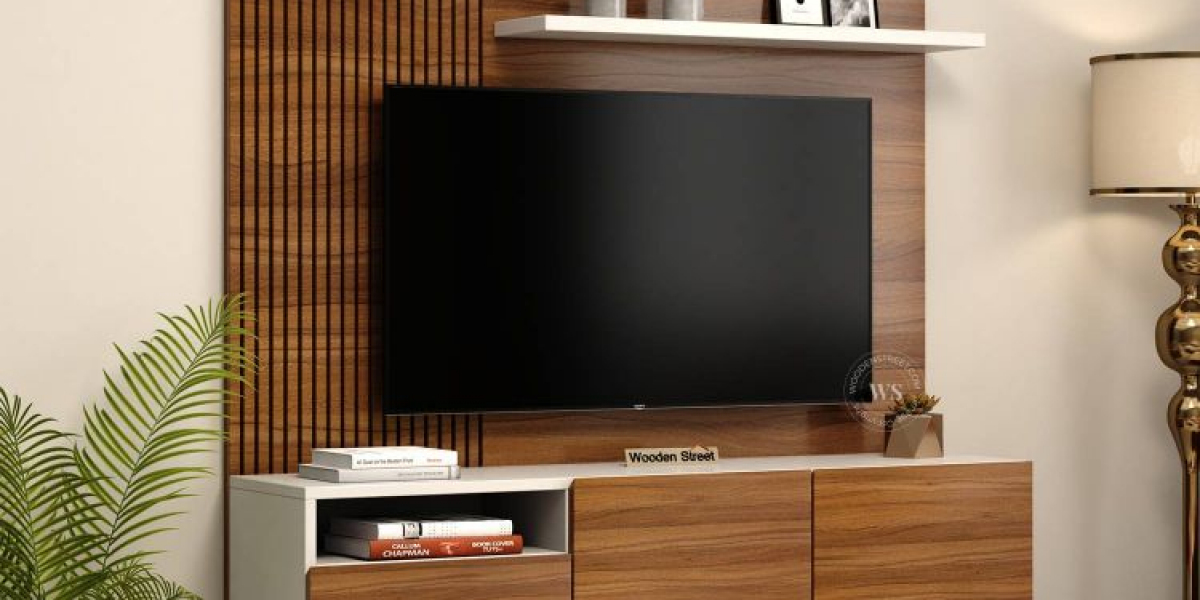A TV table is a crucial element in any living room, combining functionality with style. Whether you have a small apartment or a spacious house, choosing the right TV unit enhances both aesthetics and organization. With a variety of designs, materials, and sizes available, selecting the perfect TV cabinet requires careful thought. From storage needs to placement and durability, there are several factors to consider before making a decision.
Understanding Different Types of TV Tables
A TV unit for living room settings can come in various forms, each serving a specific purpose. Here are the most common types:
Traditional TV Stand: A simple and freestanding TV stand with open shelving or cabinets, providing ample space for media accessories.
Wall-Mounted TV Unit: Ideal for saving floor space and achieving a modern, sleek look. It often includes floating shelves or cabinets.
Corner TV Table: Designed to fit into room corners, maximizing space and offering additional storage compartments.
Entertainment Center: A larger TV cabinet that incorporates storage for books, decor, and electronic devices, making it a focal point of the room.
Factors to Consider When Choosing a TV Table
1. Room Size and Layout
Before selecting a TV unit, assess the dimensions of your living room. A large entertainment unit may overwhelm a small space, while a compact TV stand may look disproportionate in a spacious area. Measure the available space to ensure a good fit without obstructing movement.
2. TV Size Compatibility
Your TV table should be proportional to your television. A unit that is too small may not provide adequate support, while an oversized one can look unbalanced. Ideally, the TV cabinet should be wider than the TV, allowing for stability and additional space for decorative elements.
3. Storage Needs
Consider your storage requirements when selecting a TV unit for living room use. If you have multiple electronic devices, gaming consoles, or a sound system, look for a TV stand with shelves, drawers, or cabinets to keep everything organized. Hidden storage compartments help maintain a clutter-free space.
4. Material and Durability
The material of the TV table affects both durability and aesthetics. Some popular choices include:
Wood: Classic, durable, and available in various finishes.
Metal: Ideal for industrial or modern decor, offering sturdiness and longevity.
Glass: Sleek and stylish, but requires careful handling and maintenance.
Engineered Wood/MDF: A budget-friendly option with various designs and finishes.
5. Style and Design
Choose a TV cabinet that complements your interior style. Whether your home follows a modern, minimalist, rustic, or traditional theme, the design should blend seamlessly with existing furniture. Neutral tones provide versatility, while bold colors or unique designs make a statement.
6. Cable Management
A messy tangle of wires can ruin the appearance of even the most stylish TV stand. Look for units with built-in cable management features such as cutouts, concealed compartments, or integrated power strips to keep cables neatly arranged.
7. Ventilation and Accessibility
Electronic devices like gaming consoles and sound systems generate heat, so a TV unit should allow proper airflow. Open shelves or back panels with ventilation holes prevent overheating and ensure device longevity. Additionally, ensure easy access to ports and controls.
Placement Tips for Your TV Table
Where you place your TV table impacts both viewing comfort and room aesthetics. Here are some placement guidelines:
Eye-Level Positioning: The center of the TV screen should be at eye level when seated for optimal viewing comfort.
Balanced Arrangement: Ensure the TV unit is proportionate to the surrounding furniture, such as sofas and coffee tables.
Against a Focal Wall: Placing the TV stand against a feature wall enhances visual appeal, especially if combined with decor elements like artwork or lighting.
Corner Placement for Small Spaces: A TV cabinet designed for corners is perfect for compact rooms, maximizing space efficiency.
Maintaining Your TV Table
To ensure your TV unit for living room remains in top condition, follow these maintenance tips:
Regular Cleaning: Dust the surfaces frequently to prevent buildup and maintain a polished look.
Use Coasters and Mats: Protect wooden or glass surfaces from scratches and heat damage.
Check for Stability: Periodically inspect the unit to ensure screws and joints remain secure.
Avoid Overloading: Do not exceed the weight capacity of the TV stand to prevent damage or instability.
Conclusion
Choosing the right TV table involves balancing functionality, style, and durability. Whether you prefer a minimalist wall-mounted TV unit or a spacious TV cabinet with ample storage, thoughtful selection ensures a well-organized and visually appealing living room. By considering size, material, design, and placement, you can find a TV stand that perfectly suits your home’s needs while enhancing the overall ambiance.









